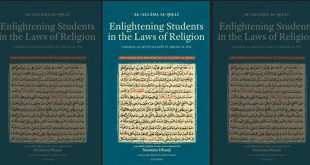It invites proposals for papers, which present case-studies of the rediscovery and understanding of Islamic objects in the 17th and 18th centuries and at the same time engage with the implications of early interpretations of Islamic objects in Europe.
The large bronze griffin now kept in the Museo dell’Opera del Duomo in Pisa is but one example among many others of an object originating from the Islamicate sphere that formed part of the material and visual culture of pre-modern Latinate Europe. With their adaptation to new contexts, many of these objects took on a new function: a perfume flask could be turned into a reliquary, a courtly textile into a shroud, and the griffin, which may well have been made for a fountain, ended up on top of the Pisan cathedral’s roof. Often, their Islamicate origins were forgotten and the objects acquired a new identity suiting the purposes of their European users. One important stage in the life of Islamic objects in Europe, though neglected in scholarship to date, is the moment in which these objects started to be re-connected to the history of their origins.
This workshop is dedicated to the period between 1600 and 1800 in which, so we believe, this important shift in the perception of these objects took place. While, for centuries, Islamic objects in Europe were unquestioned and integral parts of Latinate culture, often serving specific functions (for instance as relic-containers in church treasuries), it seems that scholars began to look at such objects anew, in tune with the scientific mindset of the European Enlightenment. Islamic origins were re-discovered, specific geographic and chronological data was produced for the objects and their belonging to a specific cultural context was reviewed according to the (often problematic) classificatory scheme of European modernity.
It invites proposals for papers, which present case-studies of the rediscovery and understanding of Islamic objects in the 17th and 18th centuries and at the same time engage with the implications of early interpretations of Islamic objects in Europe. The overall aim is to integrate these reflections with the discourse on cultural heritage across Enlightenment Europe and with the history of scholarship (notably Islamic art history).
Important Dates
Deadline for abstract submission: February 1, 2018
Conference Date: 27-28 September, 2018
Venue: Institut für Kunstgeschichte, Universität Wien, Austria
Themes and questions addressed may include the following:
– How was pre-existing knowledge on Islamic objects in Europe dissected and reassessed? Which narratives and legends circulated on these objects? How was new knowledge communicated?
– Orientalists travelled to see objects and exchanged letters discussing the Islamic material collected in Europe. Institutions interested in Oriental culture bourgeoned. Who were the scholars involved? What were the networks of scholars or institutions established or reinforced through the process of the “discovery” of Islamic objects in Europe?
– The 17th/18th-century interest in such objects entailed copious documentation. What were the materials produced (drawings, descriptions, copies of the objects…)? How did this genre of documentation differ from previous ones? How did it impact upon the subsequent history of the objects?
– Islamic objects that were now freed from fictitious attributions to saints or famous Latin kings, for instance, were perceived, touched and manipulated in new ways. Once the objects were “neutralized”, the process of musealisation started. Which institutions were involved and how did this process shape our modern perception of the objects? Was there any resistance, for example from the Church, to the demystification process of the objects?
– The act of reading inscriptions and “deciphering” the objects was not a neutral one, it entailed misreading and misinterpretation. How did this affect the reception of such objects in art historical literature and institutions?
– When looking at the rediscovery of Islamic origins and the subsequent reclassification processes of objects that were unquestioned parts of local heritage for centuries, are we also looking at a stage in European history when an explicit exclusion of Islamic objects from European heritage took place? What is the intellectual context of this shaping of national and European identities?
Abstracts no longer than 300 words should be addressed to us by 1st February 2018: dolezalek@tu-berlin.de and mattia.guidetti@univie.ac.at
 Ijtihad Network Being Wise and Faithful Muslim in the Contemporary World
Ijtihad Network Being Wise and Faithful Muslim in the Contemporary World
